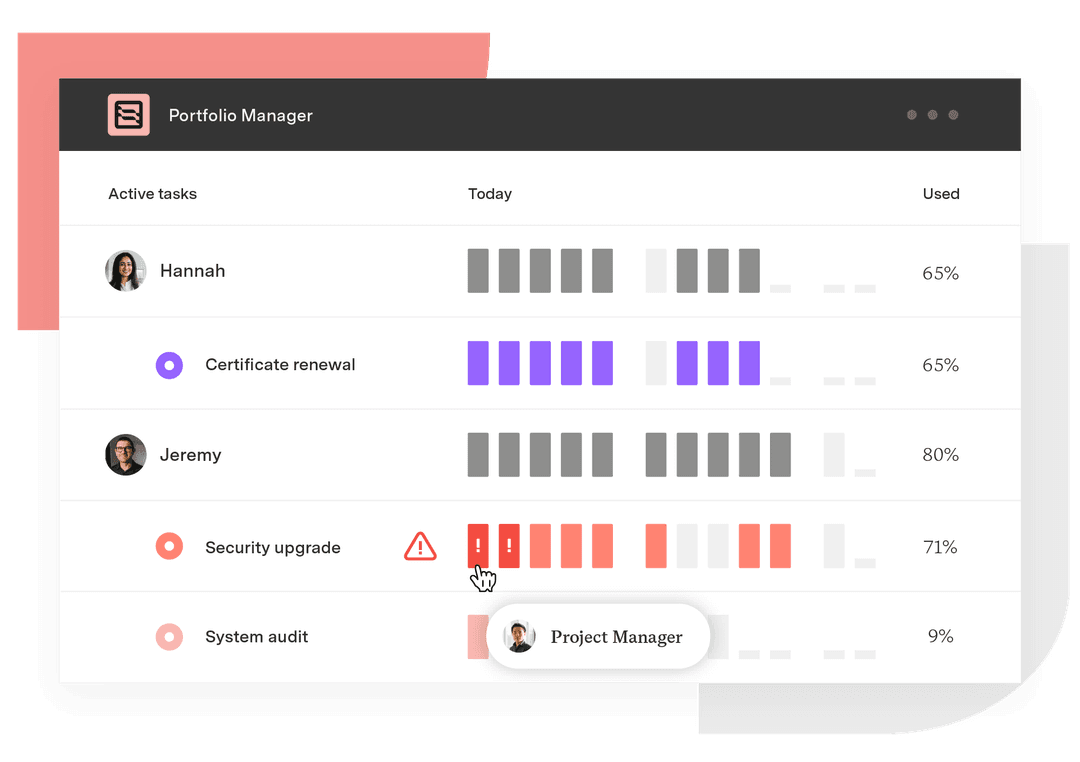Planning perfection with CalAtlantic and Portfolio Manager
Tempo Team
About CalAtlantic Homes
Before being acquired by Lennar in 2018, CalAtlantic was one of the largest homebuilders in the United States. This means the CalAtlantic IT team juggles multiple key initiatives at any given time – from managing and operating their existing systems to driving changes fundamentally geared towards helping to improve the business.
“Our IT department supports multiple business lines at CalAtlantic Homes,” says Jason Grovert, chief technology officer at CalAtlantic Homes, “We’re there to not just provide CalAtlantic with what IT has traditionally done, but also to drive transformational change across the business through innovative projects.”
Before adopting Portfolio Manager, CalAtlantic’s growing IT team had limited visibility into the multiple complex projects it was running in their ever-changing business climate. They tried other project management tools, but old school methodologies required too much effort to keep plans current.
“Given how fast things change, the moment you get your team to enter their tasks and estimates in a traditional Gantt chart, it’s instantly out of date,” Grovert explains.
Building trust with accurate schedules
So after deliberation and consideration, Grovert decided to made the call to move the team over to Portfolio Manager after hearing and sampling its task estimation feature, which allows members to use best and worst-case ranges that represent the uncertainty in a given task.
“There are different conversations you have when a task’s estimate is five to 40 hours (best case/worst case), versus five to six hours. A single point estimate of five hours hides the uncertainty that exists,” says Grovert.
With ranged estimates and historical tracking data, the CalAtlantic team finally has the data in their corner to definitely answer business-critical question like:
Was that a good amount of time spent on that task?
Is this more or less the amount of time we thought we’d spend on this project?
How does the estimate today compare to what we thought a week ago?
“The estimates are not only there to build a project plan, but to make us all better estimators on the next project,” says Grovert.
It’s not always the easiest job in the world to get your team to embrace a new tool. In this case, the CalAtlantic team was ready to switch to a system that had better time tracking than their previous tool, so selling the group at first wasn’t too difficult. After the initial rollout, the team established specific Portfolio Manager guidelines that empowered everyone to be responsible for the accuracy in the tool.
One feature that made it easier is that with Portfolio Manager, the entire team has visibility into all of a project’s estimates – a capability that did not exist before.
Portfolio Manager also delivers meaningful project intelligence to everyone involved, from Grovert who oversees the development department to product managers who oversee the work being done on their systems. This allows everyone to evaluate what succeeded and what didn’t over time.
“Portfolio Manager provides visibility at all levels to our current projects, tasks, estimates, schedules, and risks, helping us estimate schedules with confidence and manage and forecast resource availability,” says Grovert.
A more motivated and committed team
Now that the CalAtlantic IT team inputs their own plans and information into Portfolio Manager, the team has increased ownership in the delivery dates calculated for its tasks and communicated for the projects.
Grovert said: “Portfolio Manager empowers the task owners to be responsible for their own estimates and update them as the project evolves.”
With this collective ownership of work, the entire team feels more committed to the success of the project since everyone has the ability to affect it.
Grovert added: “When we communicate a date to the business it’s calculated directly from every individual team member’s estimates, which increases everyone’s commitment to get that work done.”
The team has also become more time efficient – another motivating factor. “People appreciate the organization that Portfolio Manager gives them,” Grovert says. “They know what their day, week, and month is going to look like.”
The team also appreciates how Portfolio Manager helps them visualize all the work involved going into a project – which leads to them anticipating upcoming needs and expectations.
How Portfolio Manager delivered ROI and project clarity after one year
A year after CalAtlantic started using Portfolio Manager, the team netted the following benefits:
Saved money Using Portfolio Manager has already saved CalAtlantic an estimated full-time headcount since the team didn’t have to hire a dedicated project manager. Instead, everyone contributes to keeping the project plan up to date & accurate.
Developed more accurate and trusted plans CalAtlantic’s IT project plans are close to 100% accurate on a daily basis or within a day. For example, a recent website redesign project that took seven months and 7,000 hours of work was delivered completely on time.
Spent less time in meetings Since everyone on the team can instantly see what the rest of their team is working on, the IT team was able to cut their weekly status meeting from one hour to 30 minutes.
Decreased email volumes The website redesign project produced a total of 500 workspace comments that clarified requirements or addressed blocking issues and escalations – all in one place. This drastically lowered the typical circulation of emails between team members trying to stay coordinated, while also allowing new team members to quickly bring themselves up-to-date.
Improved use of team resources The entire team knows where 100% of their time goes, and they can track and analyze their tasks from initial estimate through completion.
At the end of the day, Portfolio Manager has made the IT team at CalAtlantic stronger. “Being able to react on a daily basis to what’s going on has helped us become much more responsive to the business, our current projects, and our team’s needs,” Grovert concludes.


